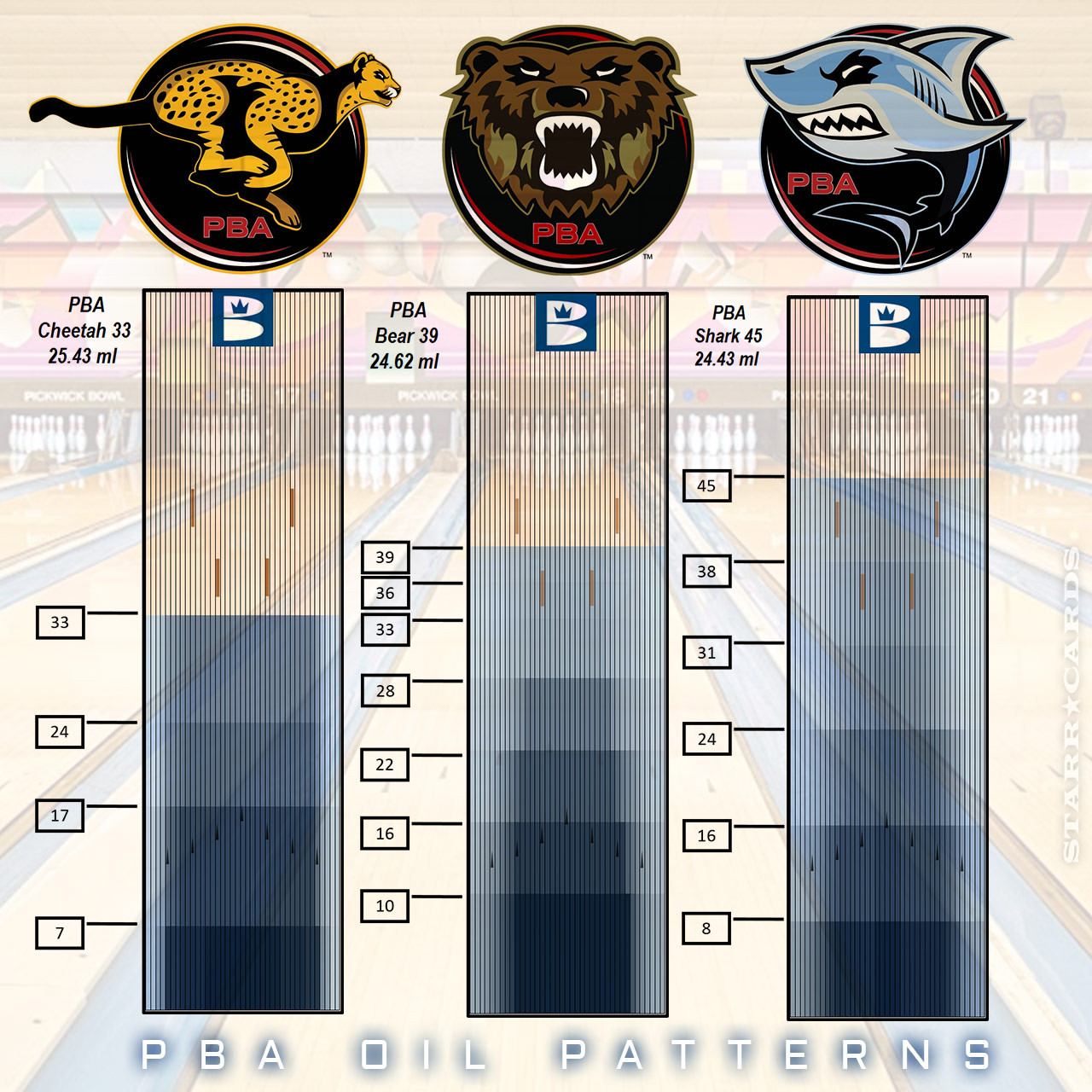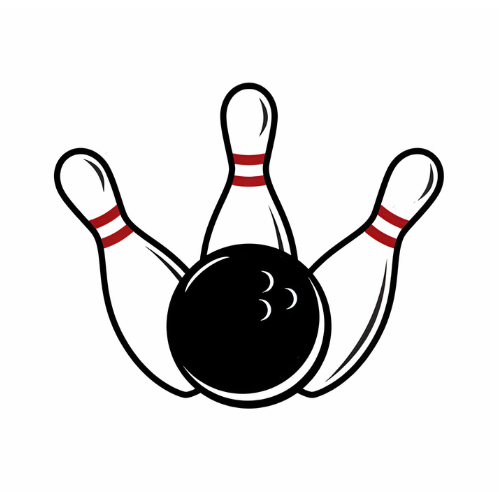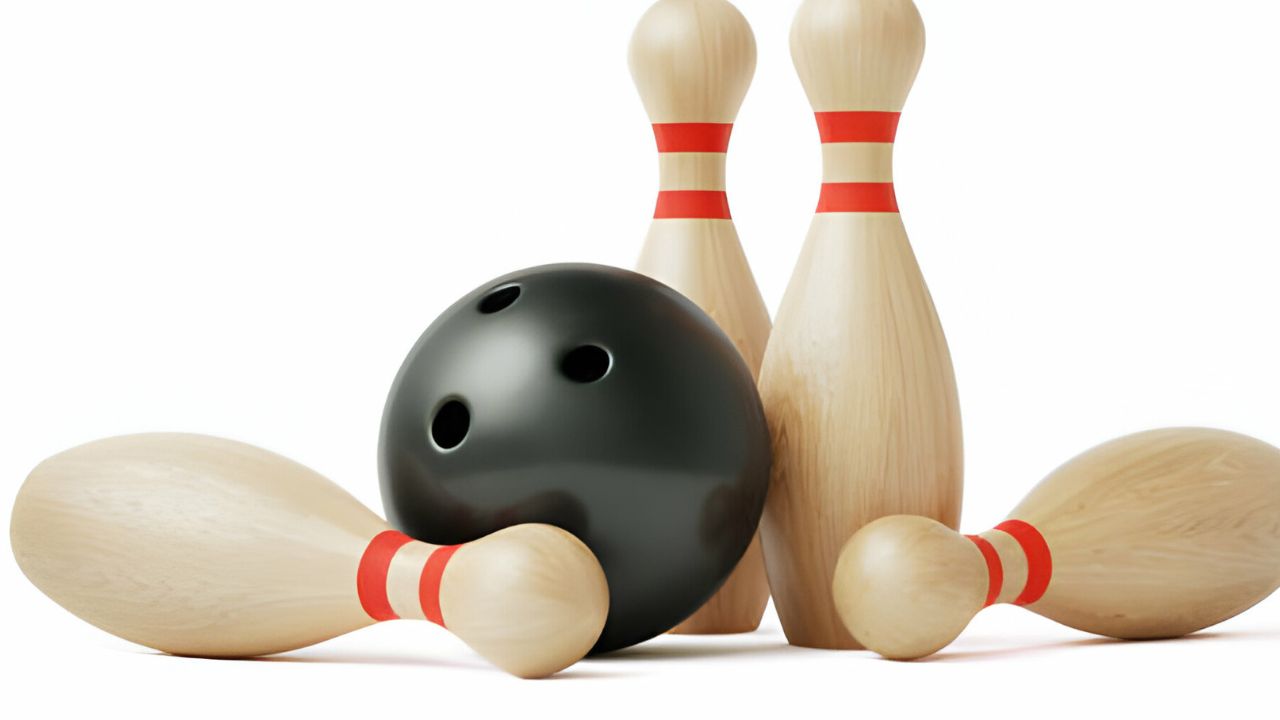Oil patterns on bowling lanes affect ball movement and player strategy. These patterns range from basic to complex designs.
Understanding oil patterns is crucial for any bowler aiming to improve their game. These invisible tracks of oil on the lane play a significant role in how the ball reacts after it’s thrown. Each pattern has distinct characteristics that require different approaches.
A “house pattern,” for instance, is the most common and provides a generous margin for error, making it beginner-friendly. In contrast, professional patterns, like the ones used in tournaments, offer less forgiveness, demanding precision and skill. Knowledge of oil patterns assists players in selecting the right ball and adjusting their technique to achieve the best possible results on the lanes. By anticipating the ball’s interaction with various oil layouts, bowlers can greatly refine their strategy to strike with consistency.
The Significance Of Oil Patterns In Bowling
Oil patterns on bowling lanes greatly affect how a bowling ball moves. Different patterns make the ball slide or grip the lane. This makes the game both interesting and challenging.
The ball’s reaction changes with the oil’s application. Oil can be light or heavy, long or short. These variations cause the ball to hook more or less. As such, bowlers must adapt their techniques to succeed.
| Oil Pattern Type | Ball Motion Influence |
|---|---|
| Light Oil | More Slide |
| Heavy Oil | Less Slide |
| Long Pattern | Delayed Hook |
| Short Pattern | Early Hook |
Strategizing for each game involves studying these patterns. Skilled bowlers choose the right equipment and decide on their throwing style based on the oil pattern. Mastery of this concept leads to higher scores and competitive edge.
Diving Into Types Of Oil Patterns
Standardized Patterns are common layouts found in many bowling alleys. These designs follow specific rules. They make playing fair for everyone. Bowlers often get used to these patterns quickly.
Customized House Patterns vary from one alley to another. Alleys create these unique oil layouts to help bowlers score higher. It can be tricky to play on these if you’re not familiar.
Sport Patterns are challenging and complex. They are used in professional bowling tournaments. These patterns test a bowler’s skill and precision. They are not for the faint of heart.
Decoding Oil Pattern Specifications
Oil patterns in bowling are like hidden maps on the lanes. Understanding these patterns can help you bowl better. Each pattern has a length measured in feet and a volume which is the total oil used.
Ratios tell us how balanced the oil is across the lane. The shape of a pattern can be like a Christmas tree or a funnel. Shorter patterns usually mean more friction, which affects how your bowling ball moves.
To read the pattern graph, check the colors. Different colors show oil density. Darker colors usually mean more oil. Lines on the graph show the pattern from the foul line to the pins. This helps us pick the right ball and playing style for the game.

Credit: starrcards.com
Choosing The Right Equipment
Choosing the right bowling ball is key to success on varied oil patterns. Different balls match different patterns. Heavy oil patterns need balls with aggressive, porous coverstocks. These balls grip the lane better. On lighter oil patterns, smoother coverstocks work best. They glide over the lane, providing control. The ball’s weight and core design also play roles.
Surface adjustments can fine-tune ball behavior. Using sanding pads increases friction on oily lanes. Polishing a ball makes it idle for dry conditions. Players should clean and adjust their ball’s surface regularly. Regular maintenance means consistent performance.
Adapting Your Technique
Mastering oil patterns in bowling is key for success. Understanding different oil patterns can greatly improve your game. Your delivery adjustments should reflect the oil pattern on the lane. A slick lane requires a smoother release, minimizing hook. On a drier lane, put more spin on the ball to increase hook.
Staying vigilant about the lane’s transition is crucial. Oil patterns break down as games progress. Bowlers must observe changes and adapt accordingly. Switching to balls with different surface textures can combat transitioning patterns. Practice on various patterns to enhance your adaptive skills.
| Oil Pattern | Delivery Adjustment |
|---|---|
| Long Pattern | Slower ball speed, less hook |
| Medium Pattern | Balanced speed and rotation |
| Short Pattern | Faster speed, more aggressive hook |
- Notice the lane’s shine to determine oil levels.
- Choose the right ball weight for better control.
- Adjust your starting position based on the pattern’s length.
- Practice different release techniques to stay versatile.
The Evolution Of Oil Patterns
The history of oil patterns in bowling is both rich and intricate. Bowling lanes initially had no oil; they were bare wood. Oil was first applied for protection, not play. It led to an unexpected twist in the game’s dynamics. Early patterns were simple, covering the lane evenly, known as “flat” conditions.
Moving forward, technological advancements played a vital role. Sophisticated machines allowed for varied oil patterns. Patterns such as the famed “Christmas Tree” made their debut. Professionals adapted, showing skill on these diverse landscapes.
Regarding future trends, expect more innovations. Custom oil patterns will likely become the norm, tailored to individual bowling centers. Sensor technology might adjust oil application in real-time, creating a dynamic playing field.
FAQ
What Are Common Oil Patterns In Bowling?
Different oil patterns include house patterns, sport patterns, and PBA patterns. House patterns are more forgiving for amateur players. Sport and PBA patterns are challenging and used in professional games.
How Do Oil Patterns Affect Bowling Scores?
Oil patterns impact ball movement and hook potential. A heavy oil pattern might limit the hook, while a dry lane enables more curve. Understanding the pattern helps bowlers strategize their shots to score higher.
Can Oil Patterns Change During Games?
Oil patterns can transition during play due to ball traffic. The oil gets moved around, creating a breakdown and causing the pattern to change. Bowlers need to adapt their strategy throughout the game.
Why Is It Important To Read Oil Patterns?
Reading oil patterns is vital for choosing the right ball and shot line. By understanding the pattern, bowlers can adjust their technique for better control and scoring potential.
Conclusion
Mastering the right oil pattern can dramatically elevate your bowling game. Each pattern presents unique challenges and strategies. By understanding the nuances of oil patterns, bowlers can refine their approach and boost their scores. Remember, practice makes perfect. So hit the lanes, experiment with your technique, and watch your bowling prowess grow.

